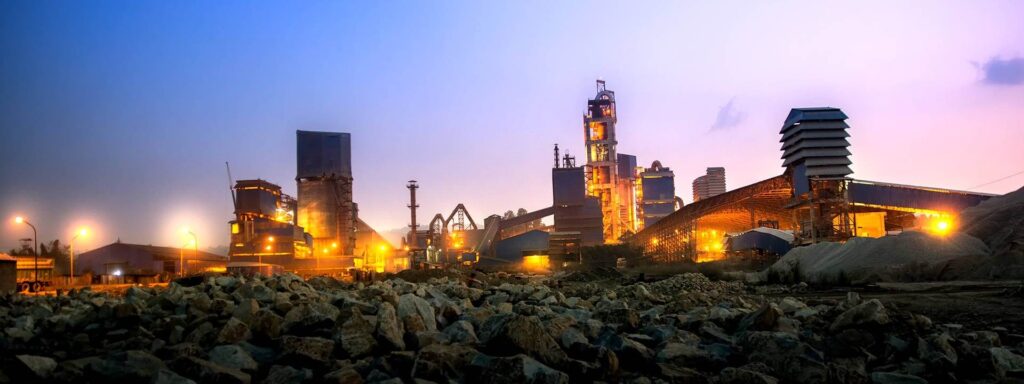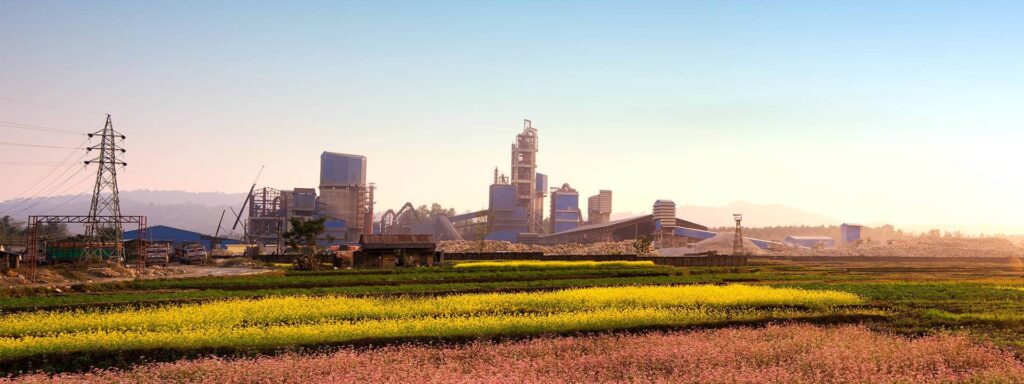Cement is an essential building block for any infrastructural growth or advancement that happens in a country. Nepal is a developing country and has more demand for cement than ever. With growing infrastructural investments and new projects, the demand for cement has been on an upward trend. The Peak of this came in 2010 and is continuing to this date. Many experts say that the current national production is in surplus as compared to the immediate demand, however, they are confident this demand will grow to keep up with the ever-growing supply. This is the main reason cement industries are still entering the market even in 2022, with large FDIs or local partnerships.
Bhimsaria Group is also associated as notable promoters and shareholders of Nepal’s two largest cement industries, namely Shivam Cement and Hongshi Shivam Cement. They have a combined capacity of 9000 Metric Tons Per Day and growing. Both have plans to expand their plant, Hongshi to have an additional 10,000 Tons Per Day, with construction starting soon.


The list below is a synopsis of the largest cement production brands in Nepal. Since Limestone mines are the most crucial factor for proper production and price, most industries are starting by getting Limestones via outsourced options or have self-owned mines. Most industries are also mixing both self-owned mines and outsourced limestones for better quality. Clinker production means taking the Limestone and crushing it, then heating it to extremely high temperatures until it thermally decomposes. Since Limestones are Calcium Carbonates (CaCO3), it thermally decomposes into Calcium Oxide (CaO) and Carbon Dioxide (CO2). The Carbon Dioxide escapes the kiln but the CaO, along with the other minerals and compounds present is what acts as the Clinker. The Clinker is then ground into fine powder to make cement – the process being Grinding. An alternative is that the clinker is sold as it is to other cement factories if there is a high yield or low direct consumption, such alternative factories then only grind the clinker to make cement.
| SN | Name | Capacity (TPD) | Location | Production Type | Production Status |
| 1 | Hongshi Shivam Cements | 6000 | Nawalparasi | Clinker & Grinding | Overproduction |
| Shivam Cements | 3000 | Hetauda | Clinker & Grinding | At Capacity | |
| 2 | Ghorahi Cements | 4500 | Dang | Clinker & Grinding | Underproduction |
| 3 | Shaurya Cements | 4000 | Udaipur | Clinker & Grinding | At Capacity |
| 4 | Samrat Cements | 4000 | Dang | Clinker & Grinding | At Capacity |
| 5 | CG Cements (Upcoming) | 4000 | Palpa | Clinker & Grinding | Under Construction |
| CG Cements (Current) | 800 | Nawalparasi | Grinding | At Capacity | |
| 6 | Sarbottam Cement | 3200 | Rupandehi | Clinker & Grinding | Overproduction |
| 7 | Huaxin Cement (Upcoming) | 3000 | Dhading | Clinker & Grinding | Under Construction |
| 8 | Arghakhanchi Cement | 3000 | Kapilbastu | Clinker & Grinding | Overproduction |
| 9 | Maruti Cement | 3000 | Parsa | Clinker & Grinding | At Capacity |
| 10 | Riddhi Sidhhi Cements | 2200 | Makwanpur | Clinker & Grinding | Underproduction |
| 11 | Palpa Cements (Tansen) | 1800 | Palpa | Clinker & Grinding | Overproduction |
| RMC Cement | 500 | Bara | Grinding | Unknown | |
| 12 | Shuva Shree Jagadamba Cement | 1600 | Parsa | Grinding | Fluctuating |
| 13 | Nepal Ultratech Cement | 1200 | Morang | Grinding | At Capacity |
| 14 | Narayani Cement | 1200 | Bara | Grinding | At Capacity |
| 15 | United Cement | 1200 | Dhading | Clinker & Grinding | Underproduction |
| 16 | Sonapur Cement | 1200 | Dang | Clinker & Grinding | Underproduction |
| 17 | Siddhartha Cement | 1150 | Rupandehi | Grinding | Underproduction |
| 18 | Supreme Cement | 1000 | Rupandehi | Grinding | Closed |
| 19 | Shree Laxmi Cement | 1000 | Kapilbastu | Grinding | At Capacity |
The scope for Cement Industries is very positive from Nepal’s Perspective. The growing demand and potential possibility for export have made it very favourable for Business Houses to invest in Cement Industries. The primary reason for the lack of production or lack of success for particular plants includes internal problems, poor planning, very high logistics and transport costs, etc. but it is not about the market scenario.
With the growing liquidity crisis in Nepal, we are in a situation where we will have to start exports to sustain the economy. Otherwise, relying on remittance is not a viable solution that will be sustainable for the nation’s growth. Cement is one of the primary independent industries in Nepal where imports have been unnecessary, and can also have a major export contribution. India is one such market where exports can be done, with bilateral understanding and collaboration. The price workings also make it a feasible choice for exports as it can compete with Indian Industries.
Although most of the above industries are focused on making OPC Cement (Ordinary Portland Cement), some are also making PPC Cement (Portland Pozzolana Cement). In the grounded clinkers, 3-5% of Gypsum is added to act as a retarder to make OPC Cement. This is usually the highest grade with respect to the purity of the Calcium. The retarder is necessary so that the setting time of cement is not too fast when mixed with water and so that the workers have ample time to finish the necessary construction.
PPC Cement, on the other hand, contains about 25-30% of Fly Ash – which is a silica-based waste product. This waste is often harmful to the environment and as per research, upon adding Fly Ash to OPC Cement, it didn’t cause any loss in strength to the finished products. Thus, it is a healthy way to recycle waste Fly Ash into something useful as it can increase sustainability and cement production volume.
However, in spite of being a waste product, we are having to purchase large volumes of this from India, paying hundreds of rupees per ton for the waste – as well as much more for the transport of this. This is benefiting no one and rather, this cost can be saved on exports. Grounded Clinkers can be sent to India where a small processing plant in India can mix the fly ash and gypsum, to reduce transport costs for the additives as well as not compromise on employment in either of the countries – hereafter still increasing exports for Nepal. This can be a very healthy outcome for the Nepali Economy as well as cost-effectively producing cement in India. OPC Cement may have a similar price point to the current productions in India, however, Nepali Clinkers can have a large edge over PPC Cement in India.
To conclude, this vast industry is filled with many complications and roadblocks, however, it can be one solution for Nepal’s dying foreign reserves and regenerate the confidence of Nepalis in their citizens, banks, and industries. This would help diversify our dependence on Remittance and Tourism, and have a much more stable economy with larger foreign reserves.
*If there is any information from the above article which needs revision, please help email us at [email protected]



